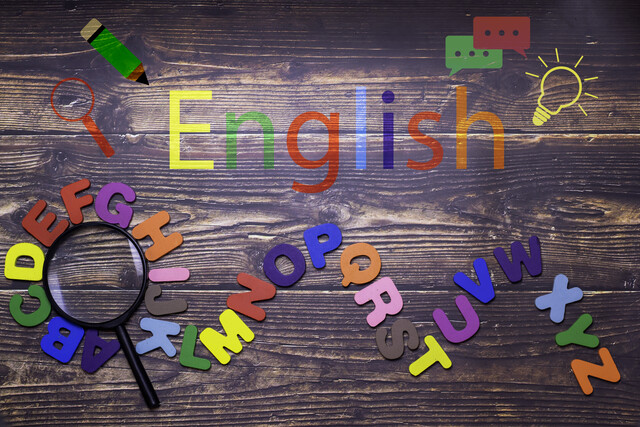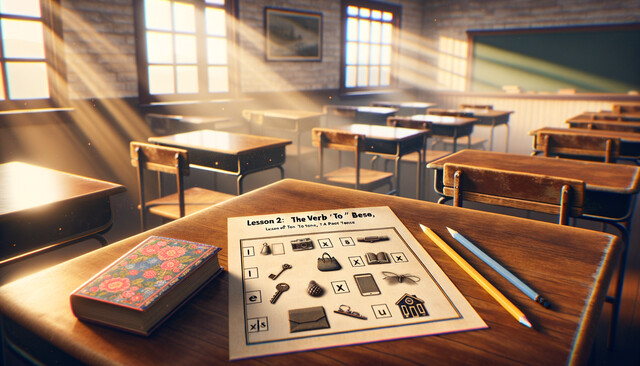The good news about the present continuous tense is that teaching this grammar provides a good opportunity for your students to have fun while learning.
A class on the present continuous will come after classes on the present simple, so the students will already know the concept of speaking about daily activities, facts, etc. which use the simple present tense.
After classroom lessons on the present simple, you can then teach it together with the present continuous in order to reinforce both the students' understanding of what they've already learned as well as how it relates to the present continuous. You will see this in the lesson plan below.
Challenges in teaching the present continuous
Even though learning it can be fun, it can take time for some students to understand the grammatical difference between what they do every day and what they are doing at the moment.
The point is to get the students to understand there is a different grammar form for speaking about their daily or regular activities versus speaking about their actions at the moment.
This is not a minor or unimportant difference, but one that can lead to miscommunication if not used in the right way.
At first, they might not understand the major difference in meaning between saying, for example while they're talking to a friend on their mobile phone, "I eat lunch in the school cafeteria" as opposed to "I'm eating in the school cafeteria."
Another sticky point about teaching the present continuous is explaining the different ways the grammar can be used, explaining that the present continuous can be used not just for things that are happening right now, but for things that we are doing in general right now, though not right at this moment.
For example, "I am working on a new project at work" can be said by a student during the class, even though it's not what the student is doing exactly at that moment such as sitting in class, learning English, listening to the teacher, etc. In a more advanced class, this aspect can be taught as the same time as the first introduction of the present continuous.
There is also the problem that the present continuous can be used in talking about the future, as in "I am meeting with the boss tomorrow."
This aspect of the present continuous is often saved for a separate classroom lesson on different ways to talk about the future.
In the classroom lesson plan presented here, you will be shown how to both remind the students of the use of the present simple they have already learned while showing them how to use the present continuous. You will learn techniques that can be adapted if you are using a textbook instead of this lesson plan.
Lesson plan
Classroom objectives
Presentation
Use the techniques we have discussed in previous lessons to present this vocabulary. Here is an example of how your boardwork might look:
to make a project early
to swim a motorcycle late
to get up
Some tips on eliciting, etc: "To get up" can taught with a drawing or photo of someone getting out of bed, and after that the words "early" and "late" can be taught by writing a time next to the image.
Write the time, like "5:00 a.m." with a clock face showing the time, and then elicit by saying, for example, "She gets up.." Students might offer answers that are good but not what you are looking for, like "in the morning" or "at five."
If they do, you can encourage them for good guesses while continuing to prompt them: "Okay. At five. In the morning."
It's good to keep them offering answers, thinking aloud in English. If the right answer isn't forthcoming, you could write the first letter, and see if anyone guesses "early."
After the full vocabulary presentation (including when the students write the words in their notebooks, you erase the pictures on the board, check their comprehension with simple questions about each word, etc.,) go back to the board and write:
I work every day.
I am working now.
She gets up early every day.
She is not getting up now.
Do you work every day?
Are you working now?
Point to the first line, and say it out loud. Then turn to the class and "Monday, Tuesday, Wednesday." and then indicate the line again and say, "I work every day." Have the class repeat out loud with the technique we have covered (as a class many times, with selected individuals, etc.)
Turn to the class again and say, "Now." You can point to the ground and point to the clock. You can say, "Now, at (for example) 10:45, I am working." Indicate the line on the board again, say "I am working now." Have the class repeat out loud.
Do this for each line.
Then give a class handout with the forms of the present continuous. The following also includes the forms of the present simple as a reminder and as a contrast to the new grammar:
Present Simple
Use: facts, states, habits, repeated actions in general
I work
You work
He/She/It works
We/You/They work
I don't work
You don't work
He/She/It doesn't work
We/You/They don't work
Do I work?
Do you work?
Does he/she/it work?
Do we/you/they work?
Present Continuous
Use: a temporary activity now, in the present
I am working
You are working
He/She/It is working
We/You/They are working
I am not working
You aren't working
He/She/It isn't working
We /You/They aren't working
Am I working?
Are you working?
Is he/she/it working?
Are we/you/they working?
Have the students repeat each line after you, going from left to right. With the first column use the word "every day" as in "I work every day." Then go to the second column and say "I am working now."
Practice
After the presentation you will be handing out exercises. Before handing them out, first write on the board:
I don't like homework. ________________________
I am drinking coffee. _________________________
Read the lines aloud, filling the answers as you do
I don't like homework. ALWAYS / IN GENERAL_
I am drinking coffee. __NOW________________
Now that you have modeled the activity, hold up the handout (below) next to the lines on the board, to indicate that the handout is the same kind of exercise. As you hand them out, you can say "Okay, please work. Five minutes!"
While the students work, go around and check their work, encouraging correct answers ("good!"), and pointing out incorrect answers by encouraging self-corrections in the way we have discussed in previous lessons.
Practice One
Write "Now" or "Always / In General"
I don't like homework. _ALWAYS / IN GENERAL_
I am drinking coffee. __NOW________________
1. I go to work at 8 o'clock. ___________________________
2. Maria doesn't like motorcycles. ______________________
3. We are eating breakfast. ___________________________
4. Juan and Maria have three children. __________________
5. They don't eat meat. ______________________________
6. New York isn't in England. _____________________________
7. They are swimming at the pool. ______________________
8. You come to work late. ___________________________
9. We play tennis on Saturdays. ______________________
10. It's raining. ________________________
11. I wake up early. _____________________________
As always, go through the class during the exercise, monitor, encourage, correct.
When they are finished, quickly have students read aloud their answers by picking students one at a time at random. For example, say "Number one, Juan. Number two, Malika."
If you have more students than numbers in the assignment, start again at number one with a fresh student until all students have read aloud at least one.
Answer: She is working now.
I ________ on Saturdays. (to not work)
Answer: I don't work on Saturdays.
Hand out the exercise, again showing that the handout is the same exercise:
Practice Two
Fill in the blanks using either the present simple or present continuous tense.
She ________ now. (to work)
Answer: She is working now.
I ________ on Saturdays. (to not work)
Answer: I don't work on Saturdays.
1. Peter ________________ every day. (to not drive)
2. John _________________ at the cinema tonight. (to work)
3. I ____________________ my parents every weekend. (to phone)
4. She __________________ a book at the moment. (to read)
5. The work _____________ always difficult. (to not be)
6. I am on a plane. I ______________ to America. (to fly)
7. You __________________ on a business trip next week, right? (to go)
8. He ___________________ early every day. (to get up)
9. They _________________ on Saturday. (to not get up)
Notice that #5 is a review of the verb to be which the students will have learned in a previous lesson. This could cause some students to slip up, so monitor carefully.
Afterward, again have students each read at least one sentence.
Practice Three
This practice is a transition to the Production phase.
Hand out the following dialogue. Divide the class in half with the technique you have learned previously. Have one half be Mary and the other Jim. Guide them through reading the dialogue, one half of the class at a time, and then have each side switch roles and read again:
Mary: Hi, Jim. What are you doing? It's lunchtime.
Jim: I'm working on the Fabio project.
Mary: Do you always work during lunch.
Jim: No, I don't usually work during lunch, but Fabio Inc. is a very important client. We are working very hard.
Mary: What does Fabio do?
Jim: They make car parts.
Now put the class into pairs and have them read the dialogue in their pairs. Walk around the class and make sure that each student takes a turn doing each role.
If time is short, skip this last part of the exercise and go straight to the Production phase. Always leave plenty of time for the Production.
PRODUCTION
You will be using two different handouts, each with the title "What am I doing?" with a long list of activities, like "driving a car" and "eating spaghetti."
WHAT AM I DOING?
-driving a car
-eating spaghetti
-brushing my teeth
-drinking wine
-eating ice cream
-talking on the phone
-reading a book
-listening to music
-watching TV
-taking a shower
-putting on shoes
-swimming
-drinking coffee
-taking a photo
(etc.)
Model the activity by indicating the handout and acting out one yourself. Say "What am I doing?" Then, for example, pretend to be driving a car.
When you get the correct reply, call up two students to the front of the class. Have the first student read the line "What am I doing?" and then act out the first line. Indicate for the second student to answer.
After this modeling, give the handouts to the pairs, making sure each person in the pair gets a different list.
Encourage the pairs to start the activity on their own, and then let them continue for the rest of the class.
You can monitor and make sure they are exchanging roles and asking the question, but let them have as much fun with it as they want at this point. Sometimes the students will even start to create their own activities to act out in the pairs.
























